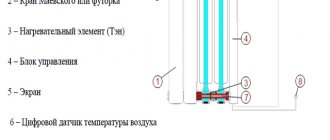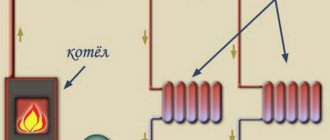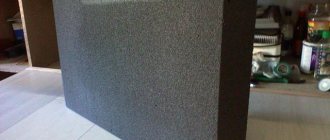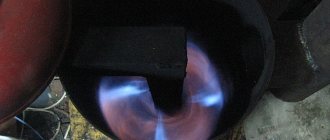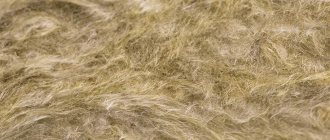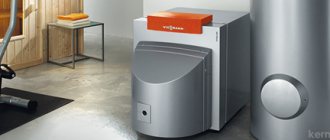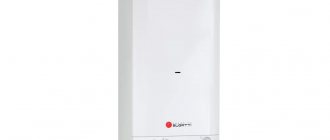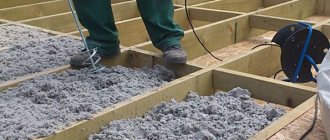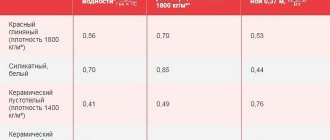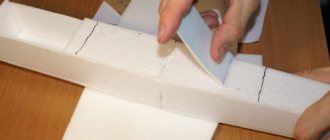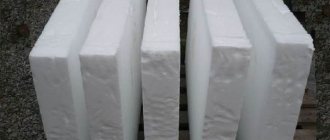Characteristics and properties of the material
Before insulating walls with penofol from the inside, you should consider the properties and features of the product. This material belongs to a new generation of foamed polyethylene insulators. Its peculiarity is the presence of a foil layer. A special production technology ensures the presence of a large number of small pores inside the material. Since they have a closed structure, the product does not allow water vapor to pass through.
An additional layer of foil serves as a reflector of infrared heat rays. Penofol has the following characteristics:
- density - 16-35 kg/cub.m.;
- Thermal ray reflection coefficient is 97%;
- foil thickness - 20-30 microns;
- total insulation thickness – up to 4 cm;
- heat transfer resistance - 1.2 sq.m.xC/W;
- sound absorption level of penofol - 32 dB.
The material is used for external or internal insulation. It is sold in rolls.
Types of penofol
To insulate walls from the outside or inside, different types of material are used:
- Type A is a polymer insulation covered with foil on one side. They come in different thicknesses. The product is used to insulate internal wall surfaces. It can be combined with glass wool. This type includes a product with perforation, which allows air to pass through.
- Type B. The foil layer is placed on both sides, so it can protect the room as much as possible from heat loss. This insulator is used for finishing floors, basements, and load-bearing structures.
- Type C. This is a self-adhesive penofol with foil on one side. It is easy to install and does not require much time. The material must be cut into fragments of a given size.
There are also other types: R (same as type A, but with a pattern on the foil side), ALP (provides the maximum degree of reflection). You should not buy 2000 Type C insulation, as it does not attach well to the base surface and has reduced technical characteristics.
What is Penofol and its analogues
Thin polymer insulation is made from the following materials:
- The main insulating layer is foamed polyethylene 3...10 mm thick with closed air pores. The thermal conductivity coefficient λ of this layer lies in the range of 0.037–0.051 W/(m • °C) depending on operating conditions.
- The outer reflective layer is aluminum foil 14 microns thick, securely glued to a polymer base.
- The third layer on the back side of the polyethylene can be glue for ease of installation or the same aluminum.
Reference. All given characteristics are taken from the official website of the manufacturer. Thermal insulation parameters of other brands may vary. For example, the thickness of a similar material reaches 150 mm.
A special feature of the material is its impermeability to moisture, the declared indicator is simply scanty - 0.001 mg/m • h • Pa. The insulation is quite light - the density ranges from 16...35 kg/m³, and is sold in rolls. Thanks to these parameters, the material serves well as an internal vapor barrier.
"Penofol" is available in 3 versions:
- double layer type A;
- three-layer – the base is coated with aluminum on both sides (type B);
- the same, with an adhesive layer - Type C.
The foil side works as a reflector of the radiant (infrared) component, polyethylene foam resists direct heat transfer. For exterior wall cladding, a perforated version of Penofol, shown in the photo, is offered. Many small holes are designed to allow water vapor to escape from the thickness of building structures.
External wall cladding is made with special insulation with perforation
Scope of application
Foil penofol is often used to insulate houses, baths, and saunas. In addition, the areas of application of the material are as follows:
- residential buildings, country houses, multi-storey structures;
- industrial and administrative buildings;
- kindergartens, medical institutions;
- hangars and warehouses;
- ventilation and heating systems;
- railway cars;
- large vehicles, refrigerators.
In residential buildings, attics, attics, interior spaces (walls, ceilings, floors), balconies and loggias, and heating pipes are insulated with penofol. It also strengthens the outer insulating layer.
Advantages and disadvantages
Before using insulation, you should also consider its advantages and disadvantages. The advantages include:
- good reflection of heat rays, which allows for a good indoor climate not only in winter, but also in summer;
- high wear resistance;
- insulation can partially serve as a waterproofing agent;
- small weight;
- ease of mounting and dismantling;
- does not deform under the influence of cold or hot air;
- protection from street noise;
- absence of harmful components in the composition of penofol;
- fire resistance;
- the layer has a thickness of 4 mm , while it is more effective than other materials;
- no need for additional vapor barrier;
- resistance to the influence of biological factors: mold or mildew does not form on the surface of penofol, it does not rot;
- ease of transportation and installation.
This insulation also has disadvantages. It is soft, so it is not suitable for finishing with plaster or wallpaper. To secure the material to the surface, you will have to purchase special adhesives. Penofol is not always enough for maximum insulation.
How to choose penofol
It is recommended to consider the following criteria for choosing penofol:
- The price by the thickness, as well as how many layers of aluminum were applied to the reflective surface. The standard size is from three to eight and even ten mm. Penofol with one side - a reflector with a size of 3 or 4 mm, type A - can cost approximately up to 55 rubles / m². 10 mm type B is considered much more expensive and more durable of all; the cost for it can reach from 100 to 130 rubles/m² .
- In stores you can come across the label “Penofol 2000”. We are talking about an analogue of standard material, but cheaper (it costs from 35 rubles/m² ). In terms of strength, according to experts, it is much inferior to classical insulation.
- The best ratio between the cost of the substance and the performance data is shown by penofol 5 mm thick at a cost of approximately 70 rubles / m².
- When you need to insulate the roof or basement rooms, in the basement, on the balcony, for saunas, or walls and ceilings, you can use A-type penofol. When used on wooden floors, it is better to take B-class. C-class is used for metal structures and vehicle insulation.
Criterias of choice
To choose penofol for wall insulation, you need to consider the following recommendations:
- for quick and convenient installation, you should not buy material whose thickness is less than 5 mm;
- if you need wall decoration in rooms with high humidity and frequent temperature changes, then it is better to choose foil-clad polypropylene;
- when choosing insulation, you need to pay attention to how well the foil part is polished (the quality of reflection of heat rays depends on this parameter);
- The roll contains 9-18 square meters of material. grounds;
- If the material is sewn, then it is better not to buy it.
As for manufacturers, it is better to give preference to those companies that have a positive reputation. They guarantee the necessary technical characteristics of penofol.
Advantages and disadvantages
Like any solution in the field of thermal insulation, penofol has certain advantages
They are the first thing consumers consider when looking for an effective insulator. Positive characteristics:
- The versatility of the material. It is actively used for work during the construction of facilities and during repairs. It is often used as the main insulation to improve the performance of balconies.
- Minimum thickness. Low values of this parameter do not affect the insulating properties in any way. For example, penofol with a double-sided foil coating 4 mm thick is an excellent replacement for an 8.5 cm mineral wool layer.
- Easy installation procedure. The absence of difficult moments during installation allows you to avoid purchasing special tools. To cut the fabric, you can use a regular knife. For reliable fastening, a regular furniture stapler, tape or small nails are suitable.
- Penofol is an environmentally friendly material. The components that are used to create it are often used for food storage. Some companies producing this solution claim that it is able to provide protection against radiation.
- High fire safety. This insulation will never cause a fire, since it is classified as a low-combustible material.
- Rodents are indifferent to this heat insulator.
- Ease of transportation. Penofol is produced in the form of rolls. They are easy to place even in the luggage compartment of a car.
Although penofol has many advantages, it is still not without its disadvantages. One of them is excessive softness. This feature imposes certain restrictions on use: the material cannot be used for thermal insulation of walls under plaster or wallpaper; in some cases, a special adhesive composition is required for fastening (this disadvantage is absent if the consumer has chosen self-adhesive insulation for the work).
Nuances of foam installation technology
Thermal insulation construction with penofol provides a preparatory stage and selection of the necessary tools. The condition of communications and the structure itself is first checked. If there are grooves or other defects on the base, they need to be repaired with putty. There should be no dust or dirt on the surface. It is thoroughly cleaned with sandpaper.
Tools and materials
To insulate a structure with the specified material, the following tools are required:
- building level, knife, tape measure;
- stapler and staples;
- spatulas;
- marker;
- electric drill;
- screwdriver;
- sandpaper.
Dowels are often used to secure the material. During preparation, a primer must also be applied to the base. If the base is wooden, then it requires additional antiseptic and fire retardant treatment.
Insulation of house walls from the inside
Insulation of walls from the inside is carried out in the following order:
- Making a frame from wooden slats. In this case, a space of 2 cm should remain on both sides of the penofol. Thus, the effect of the insulation will be maximum. The sheathing must be secured using dowels. The pitch between the slats is 1 m.
- Insulation of electrical wires. The aluminum foam layer has a high level of electrical conductivity.
- Fastening the material. A furniture stapler and staples are used for fixation. Strips of the required width or length are cut with a construction knife. To improve the thermal insulation properties, the seams between the elements are taped with masking tape. It is not recommended to lay strips overlapping.
After the insulation is secured, the wooden frame is reinstalled. Chipboard or MDF can be fixed on it for subsequent finishing.
External wall insulation
To insulate a house from the outside, it is better to use a perforated type of material. It not only provides good insulating properties, but also helps remove steam from the room. Exterior finishing is done if there is no desire to change anything inside the building. Work should be carried out in warm weather on a dry base. Installation involves the following steps:
- Treating walls with antiseptic.
- Making a wooden frame. Self-tapping screws are used for fastening.
- Laying the insulation while maintaining a two-sided gap of 2 cm. The joints are connected with metallized tape.
Now you can make another wooden frame and begin finishing the building.
Ceiling insulation
Installation of insulation on the ceiling is carried out in the following sequence:
- Fastening the frame from wooden planks or metal profiles. Dowels are used for fixation. The step between elements is 1 m.
- Preparation of penofol fragments. There is no need to cut a large number of strips at once, since the ceiling area may have deviations.
- Fastening the material. The first strip is nailed onto the frame close to the wall. In this case, the foil side should be facing inside the room.
- The remaining fragments of penofol are laid end to end. All seams are covered with foil tape.
Chipboard sheets can be mounted on top of the material and the surface can be finished.
Floor insulation
Penofol is used as an insulating layer when arranging floors, as it is unpretentious in installation and operation. The base does not require special preparation. It needs to be smooth, clean and dry. The insulation must be laid so that there is a ventilation gap between the surface and the material. This will make it possible to avoid condensation.
Penofol must be secured with glue or double-sided tape. The use of a construction stapler is permitted. As in previous cases, the insulation strips are mounted end-to-end, and the seams are connected with metallized tape. The foil should “look” inside the rooms.
So, penofol is a new generation of insulation that provides a high level of insulation not only from heat loss, but also from noise and moisture. At the same time, the material consumption is relatively small. However, you need to choose the material correctly.
Thermal insulation of wooden walls with Penofol
Work on insulating a wooden house is carried out according to the following algorithm:
Insulation of wooden walls from the inside with Penofol should begin with sealing the cracks and gaps that form naturally in the wood
It is recommended to pay special attention to checking joints, window frames, door frames, and corners. Making a frame for a heat insulator for wooden walls is not necessary. If sheet Penofol with one-sided foil is used, then it is the side with foil that should be facing the sheathing, that is, inside the room. A sharp knife is used to cut strips
The strips are attached using special staples and a powerful construction stapler. At the same time, they should be in close contact with each other so that there is no free space between them. To secure the joints, they are glued with aluminum tape. This will provide a smooth and uniform reflective surface. Maintaining an air gap is a mandatory factor for effective insulation and the absence of condensation. The air space must pass between the material and the wall. Wooden blocks are placed on top of the insulator, which will serve as lathing. You can attach chipboard sheets or plastic panels to them. Final finishing occurs in the same way as in the case of concrete walls.
Note! It is necessary to carry out work on the internal insulation of a wooden house after the final shrinkage of its walls and foundation occurs. Usually this happens no earlier than a year after completion of all construction work.
